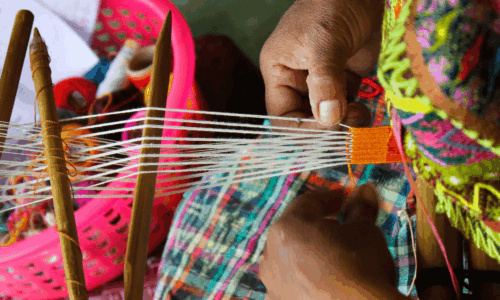Once upon a time, fashion meant a sewing machine, a pair of scissors, and a whole lot of patience. Today? We’re 3D-printing dresses and growing jackets in petri dishes. Welcome to the bizarrely brilliant world of 3D-printed textiles and lab-grown fabrics, where heritage craftsmanship is getting a futuristic makeover, and fast fashion is, well… getting composted.
3D-Printed Textiles: The Future, One Layer at a Time
Forget fabric rolls — imagine downloading your wardrobe. 3D-printed textiles are flipping traditional garment-making on its head. Instead of cutting and stitching, we’re printing layer by layer, sculpting fabrics with robotic precision. Think zero waste, hyper-personalized fits, and designs that no sewing machine could ever dream of making.
The magic lies in materials — some of these printable fabrics are made from biodegradable polymers, while others are woven with recycled plastics or even algae-based compounds. The result? Clothing that could one day dissolve back into nature when you’re done with it. Goodbye landfill, hello sustainability.
And let’s talk aesthetics — 3D-printed fashion isn’t just eco-friendly, it’s futuristic couture. From lattice-like textures to gravity-defying structures, this tech is giving designers a whole new playground. The best part? You could soon be printing your own clothes at home, just like you’d print a document (except way cooler).
Lab-Grown Fabrics: No Fields, No Factories, Just Science
If growing your own vegetables is a thing, why not grow your own clothes? Lab-grown fabrics are making that a reality. Scientists are brewing biofabricated materials in laboratories, producing lab-grown leather, silk without silkworms, and cotton without cotton fields.
The process? A blend of science fiction and sustainability. Bacterial fermentation, mycelium growth, and cellular agriculture are replacing industrial-scale farming. No pesticides, no water-guzzling crops — just clean, controlled production that’s better for the planet and eerily futuristic.
And before you ask — yes, it feels just like the real thing. Whether it’s mushroom leather that rivals cowhide or lab-grown cotton that mimics traditional fibers, the final products are virtually indistinguishable from their conventional counterparts. But with a fraction of the environmental footprint.
The Future of Heritage: When Innovation and Tradition Have a Lovechild
You might be thinking, “Cool, but how does this connect to heritage?” Well, innovation and tradition aren’t enemies — they’re dance partners. The craftsmanship of the past is merging with the technology of the future to create a new era of sustainable fashion.
Imagine artisanal weavers integrating 3D-printed lace into their designs. Or traditional leatherworkers crafting bags from lab-grown hides instead of cow leather. It’s a remix, not a replacement — honoring the old while embracing the new.
This is The Future of Heritage, where ancient techniques meet cutting-edge tech, creating heirloom-quality fashion that respects both craftsmanship and the climate. The best part? It’s not just about nostalgia — it’s about ensuring that textiles and fashion continue to thrive, without wrecking the planet in the process.
So, What’s Next?
Expect to see 3D-printed fashion collections hitting the runways, while lab-grown materials make their way into mainstream wardrobes. Sustainable textiles are no longer a niche — they’re the future. And with consumer demand for eco-friendly fashion skyrocketing, brands are taking notice.
The real question is: Are you ready to wear the future?
3D-printed textiles, lab-grown fabrics, sustainable fashion, biodegradable textiles, biofabricated materials, lab-grown leather, mushroom leather, eco-friendly fashion, future of textiles, innovative textiles, heritage fashion, 3D-printed clothing, sustainable textiles, ethical fashion, fashion innovation, compostable fabrics, fashion technology, slow fashion, future of heritage, textile sustainability




